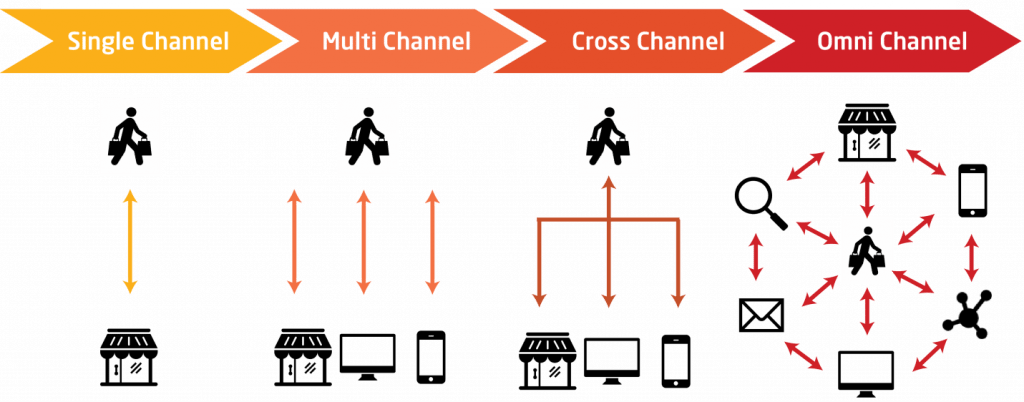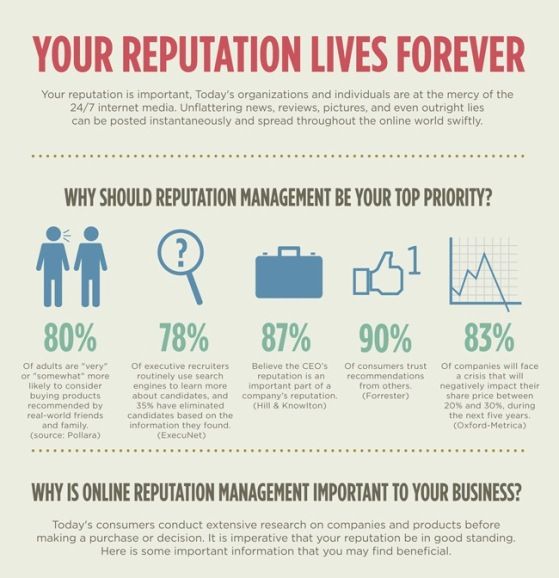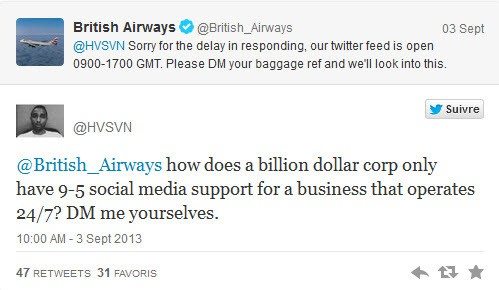How Retailers Are Damaging Their Digital Presence

Believe it or not, even some of the biggest retailers in the world are still damaging their online presence.
According to NRF CEO Matthew Shay, online sales will grow 8-12% in 2017, whilst a projected 3.7%-4.2% growth rate is only expected for the retail industry as a whole (excluding automobiles, petrol stations, and restaurants).
The climate we are in dictates that the average consumer is constantly being influenced by digital, regardless of when and how that consumer decides to make a purchase.
To back up this theory, studies show digital devices are currently influencing $0.56 of every $1 that’s currently spent in physical stores.
Despite retailers understanding how important digital is, they don’t necessarily know how to harness its power.
5 Digital Retail Mistakes Still Happening Today
One of the biggest mistakes I see still happening in the retail industry is their sluggish approach to adapting to the latest trends and technologies available to them and their customers.
Below are my Top 5 digital retail mistakes that are still happening today.
Major Retailers Focusing on Individual Channels When Customers Think Brand Experience
Big retailers all over the world all too often fall into the trap of falling into individual channels that don’t exist in the customer’s mind.
Customers think Omnichannel
What is Omnichannel? Omni means all – therefore all channels. Delivering a unified and consistent experience every time and in every way possible the customer interacts with your brand is what retailers should be striving for.
Omnichannel enables retailers to deliver a cohesive brand message, ensuring a customer can have a seamless experience across multiple channels.

Image Source: The DMA
“Shoppers are looking to physical retailers to go beyond the transaction, provide richer experiences to the consumer and to play an even greater role in their lives and the lives of their community. Therefore, there is a need to think differently about the retail offer, whether digital or in store.” ~ Helen Dickinson – British Retail Consortium CEO
Why Is Omnichannel Important To Retailers?
Studies show high-value customers use more channels when making a purchase. Retailers and brands that offer experiences across as many channels as possible are able to gain more information from these loyal shoppers that spend more.
Retailers Are Failing To Be Where There Customers Are
If you can’t satisfy your customer’s needs, let them buy on their terms, when and where they want, you’re going to fail.
According to a study, 77% of online shopper use social media – 39% of which follow retailers on social media and 34% claim social media influences their purchases, and 23% have purchased something they have seen on a social media platform.
Do You Neglect Social Media and Focus on Your App? Stop!
If you’re one of these retailers that don’t see the importance of using social media marketing as a tactic and instead focus on your App. Now’s the time to stop, why?
According to a report from Market Force, when US consumers were asked “does your favourite fashion retailer provide a mobile app?”, an eyeopening 64% of consumers replied: “I don’t know”.
Why Is Being Where Your Customers Are Important?
Think about it, your potential customers can only make a purchase and develop an emotional attachment to your brand if your brand has a presence where your customers spend their time.
Fluent conducted a survey, which shows nearly 50% of customers who engage with retailers through 10+ channels – yes 10! – say they make a purchase of their favourite retailer at least once a week. Compared to only 21% of consumers who engage across 1-4 channels make purchases at the same rate.
This is why you need to ensure your brand is keeping up with the latest trends, such virtual reality.
Take Dominos, for example, they completely turned their company around with a large digital presence, and allow potential customers to purchase through more than 15 different platforms.
Making It Difficult For Customers To Spend Their Money
Okay, have you ever heard of a successful retailer that made it hard for their customers to spend their money?
No? Me neither.
So, why would you do the same?
According to data compiled from multiple sources by Baymard Institute, the rate of online shopping cart abandonment currently sits at 70%.
There are a number of reasons why this rate is so high, and not understanding them could be the difference between being successful and failing.
One of the main reasons cart abandonment is so high, is because of either lengthy or complicated checkout processes, with 39.1% of survey respondents stating this as the reason. 21.7% of survey respondents also cite they abandon a transaction due to a lack of acceptable payment options.
Why’s This Important For Retailers?
This is the last step of the customer buying cycle and the most important. You don’t want to lose the customer now, you’ve already done the hard part in getting the customer to this point.
However, customers won’t spend their money with you if you don’t offer the right payment options, or if your checkout process takes too long or makes them second-guess their decision.
Not Understanding What The Customer Wants/Needs From Your Brand
You could have the best service/product ever, but if you don’t understand your customer, then the best service/product you’ve ever had, could turn out to be your worst.
To ensure your brand succeeds, you need to understand who your customers are and what they want.
No matter how good your service or product is, if your customers don’t want it or believe they don’t need it, they won’t buy it.
One of the best ways to understand what your customer wants or needs is to create buyer personas, this way you can truly put yourself in their shoes.
Another great way of finding their needs is to understand your customer’s current retailer. The chances are your potential customers are already buying products or services similar to yours from a different retailer. Therefore you need to understand;
- Where your customers are currently shopping
- Why they’re buying from them
- How you can be different and add more benefits to the customer
Understanding the three points above can go a long way in ensuring your product or service is a successful one.
Awful Reputation Management
Having an awful reputation online could kill your brand.
67% of consumers have cited that their purchases are influenced by online reviews. When consumers come across a negative brand review online, chances are they won’t be buying a product or service from them and will move on to a competitor who has positive reviews.
Many online brands either decide to not answer a negative review, or to attack the customer that has left the review. This is not how you should deal with your online reviews.

With all this in mind, below is how you should NOT carry out your reputation management.

Is it me, or is it pretty crazy to think a business that operates 24/7, their twitter feed is only open for eight hours a day! You better make sure the airline only loses your luggage during their “Twitter feed hours”.
This isn’t the worst example of reputation management out there and didn’t damage their reputation that much, however, for smaller businesses reputation management could have a detrimental effect.
Ensure your reputation management always puts the customer first and provides a solution to their problem.
Moral Of The Story? Understand Your Customers!
The digital world has shifted all the powers that be to the customer. Retailers must become customer-focused.
Remarkably, 52% of retail CEOs stated they haven’t defined or started implementing a digital transformation strategy.
The quicker retailers understand customer experience – across and between every channel – is now what binds consumers to your brand.
Calculated investment in digital solutions is the only way to offer these experiences to your customers.
What are your tips for retailers you see failing online? Have your say below.
Do you have a similar problem? Let us help you solve it. Contact the team.